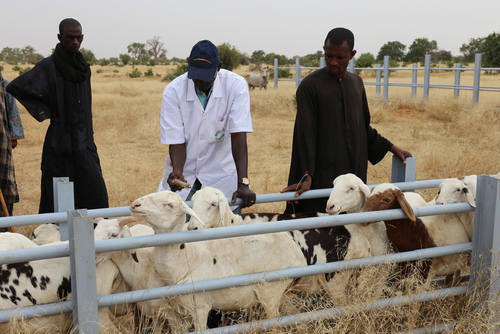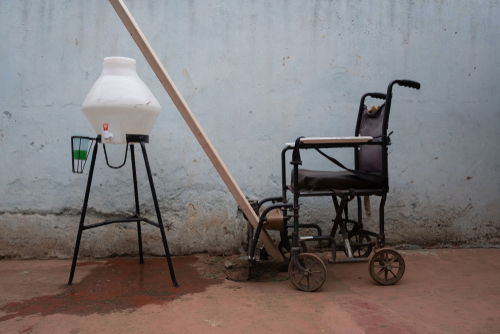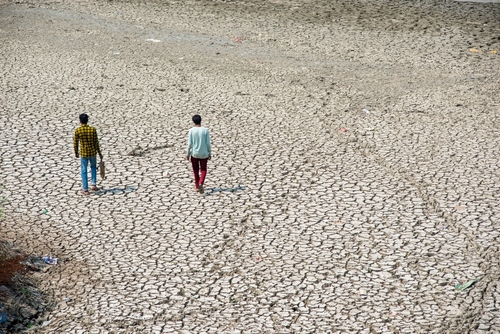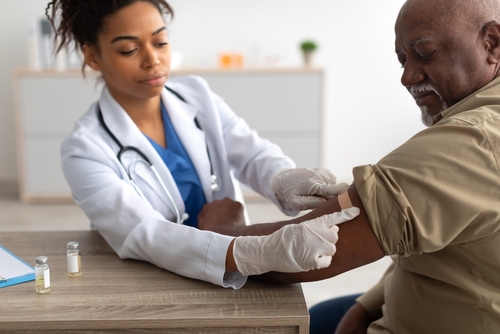November 15, 2023

Fighting against drug resistance in the WHO South-East Asia Region
One Health Trust’s Dr. Ramanan Laxminarayan co-authored an article that outlines progress made by the 11 Member States of the World Health Organization South-East Asia (SEA) Region in mitigating the burden of antimicrobial resistance (AMR). Although all SEA Region Member States, with support from the WHO, have developed and endorsed national action plans (NAPs) on AMR, progress has been fragmented and complicated by a lack of technical capacity, limited resources, and the COVID-19 pandemic. Available data from the region show persistent levels of bloodstream infections due to resistant Escherichia coli and Staphylococcus aureus between 2017 and 2020 and an increasing level of hospital-associated bloodstream infections. Prioritization of One Health-centered policies will help countries address AMR from a holistic standpoint and accelerate the implementation of their NAPs against AMR. [The Lancet Regional Health – Southeast Asia]
A journey into global health
OHT’s Dr. Ramanan Laxminarayan was interviewed about his journey into global health and how he became interested in One Health and health equity. He recounted how as an undergraduate student in engineering in India, he decided to clean up two rivers in Chennai (where he grew up) that were polluted and affecting the livelihoods and health of the poorest people in the area. The experience led him to seek advanced education in Epidemiology and Economics to address problems that require thinking about health as a collective issue. His career spans research, policy, and academia, taking on issues such as infectious disease, vaccines, and climate change. To address antimicrobial resistance (AMR), Dr. Laxminarayan emphasizes the urgency of measures like improving clean water access, promoting new drug and vaccine development, and addressing behavioral and social norms. Despite the gravity of AMR, he remains optimistic that concerted efforts will lead to significant progress, drawing parallels with successes in addressing HIV and malaria. [Antimicrobial Stewardship and Healthcare Epidemiology]
Fear of economic losses and avian influenza prevention among poultry market vendors
A recent study evaluating the effect of risk perceptions of highly pathogenic avian influenza (HPAI) transmission on the preventive behaviors of live poultry market (LPM) vendors in Guangdong Province, China showed that wholesale LPM vendors (wLPMs) perceived severity of HPAI motivated the adoption of preventive behaviors, however, this effect was not seen among retail LPM (rLPM) vendors. Perceived barriers to preventing HPAI transmission negatively impacted self-efficacy, or confidence in one’s ability to prevent HPAI transmission, of both rLPM and wLPM vendors. Concerns about time, money, and economic losses could explain the vendors’ reduced self-efficacy for initiating preventive behaviors, therefore, increasing knowledge about HPAI among vendors in LPMs may represent an effective behavior modification strategy and could curb HPAI transmission in a high-risk setting. [Poultry Science]
One Health approaches to rabies elimination
A systematic review assessed optimal, cost-effective interventions to prevent rabies in humans and dogs using a One Health-based rabies elimination approach. Among 24 high-quality, unique economic evaluations from mostly low- and middle-income countries, mass dog vaccination (MDV) was found to be a cost-effective rabies prevention strategy, alone and in combination with other strategies. Vaccination coverage of approximately 70 percent was sufficient to interrupt rabies transmission for at least 6 years. The optimal strategies under a One Health approach included MDV, integrated bite case management, efficient post-exposure prophylaxis (PEP) use, and a shift to an abridged, one-week intradermal rabies vaccine regimen. [Transactions of the Royal Society of Tropical Medicine & Hygiene]
Cattle movements and seasonal disease variation in Uganda
A social network analysis evaluated seasonal cattle movements in Uganda to explore the role of districts within the seasonal cattle network in the spread of transboundary animal diseases. The findings suggest that local and long-haul disease spread are likely to occur via the live cattle trade, with approximately three consecutive movements between districts connecting susceptible and infected animals. At the country level, the cattle movement network is highly affected by seasonal variability, explaining districts’ differences in vulnerability to disease by season. Furthermore, live trade and slaughter seasonal networks are highly concentrated in large urban centers, highlighting these districts as potential targets for network fragmentation and, thus disease containment efforts. [Nature Scientific Reports]
Pharmaceutical waste spreads antimicrobials and AMR genes in water bodies.
A narrative review investigates how pharmaceutical waste contributes to AMR in the environment by disseminating antimicrobials and AMR-associated genes. The improper disposal and excretion of unused pharmaceuticals are the two main ways pharmaceuticals enter the environment, with disposal methods varying greatly by the scale of pharmaceutical companies. Antibiotic resistance genes can also spread through wastewater into surface waters, commonly used by aquatic and terrestrial animals for drinking or irrigation. Rivers also serve as a major reservoir of pathogens, AMR genes, and mobile genetic elements that confer AMR. Improved waste management techniques and a One Health approach to policy formulation are needed to reduce the harmful effects of AMR on the environment. [Biosafety and Health]
Two-dose Ebola vaccine regimen is safe and immunogenic among infants in West Africa.
Researchers conducted a phase 2 randomized, double-blind, controlled trial to assess the safety and immunogenicity of the Ad26.ZEBOV and MVA-BN-Filo Ebola (EBOV) vaccine regime in infants aged 4 to 11 months in Guinea and Sierra Leone. The 2-dose Ebola vaccine regimen was well-tolerated, with local and systemic adverse effects more commonly experienced after the first dose. The 2-dose regimen induced robust antibody responses in all 107 infant participants 21 days after receiving the second dose. While serum antibody levels decreased over the follow-up period, 93 percent of infants aged 4-8 months and all infants aged 9-11 months had binding antibody concentrations 2.5 times higher than their baseline concentrations 12 months after receiving dose 1. Overall, the results of this study demonstrate that the Ad26.ZEBOV and MVA-BN-Filo Ebola vaccine regimen is safe, well-tolerated, and immunogenic in children under one year who are particularly vulnerable to Ebola-related morbidity and mortality. [The Lancet Global Health]
Portable X-rays with artificial intelligence can improve tuberculosis screening.
Nigeria has the highest TB burden in Africa, and 56 percent of cases went undiagnosed in 2021. Many factors contribute to this gap in diagnosis, including lack of access to health services and issues with diagnostics, such as poor screening, insensitive tools, and a lack of high-quality tests. Chest X-rays can improve the sensitivity of TB testing and can detect disease in asymptomatic individuals. A study in rural northeast Nigeria utilized an ultra-portable X-ray device equipped with AI to interpret images and produce an abnormality score. An abnormality score of 0.5 identified 89.4 percent of TB cases with a specificity of 62.8 percent. Utilization of portable X-ray devices with AI interpretation is a feasible and affordable method of improving TB screening in remote areas. [BMC Global and Public Health]
Estimating the fungal disease burden in Sudan
Fungal diseases are underdiagnosed and underreported globally but contribute significantly to the morbidity and mortality of at-risk populations, such as individuals with HIV, tuberculosis, cancer, asthma, and chronic obstructive pulmonary disease. Sub-Saharan Africa bears the highest burden of these diseases and is therefore at greater risk from complications due to fungal infections. Researchers estimated the burden of fungal diseases based on the prevalence of susceptible populations and found a total of 5 million people from Sudan likely suffer from fungal infections. The most common fungal infection was the scalp infection tinea capitis, affecting 4,127,760 people in the country. They found that 2,698 of every 100,000 Sudanese women suffer from recurrent Candida vaginitis and 36 of every 100,000 people suffer from the neglected tropical disease, eumycetoma. The underdeveloped public health infrastructure in Sudan requires urgent attention to improve surveillance, diagnosis, and treatment of fungal diseases. [PLOS Neglected Tropical Diseases]
Climate change is contributing to health emergencies in Liberia.
Liberia is particularly at risk from variable rainfall, increased temperature, and rising sea levels due to a high burden of infectious disease, poor infrastructure, and food insecurity. A cross-sectional survey conducted in two diverse regions in Liberia gauged the population’s assessment of health emergencies related to climate change and discovered that most respondents have experienced increased heat intensity during the dry season, increased rainfall during the rainy season, and increased severity of disease. Respondents noted impacts on water quantity and quality, food availability, unemployment, and lack of electricity as the strongest predictors of increased health emergencies. [PLOS Climate]
Image from Shutterstock











